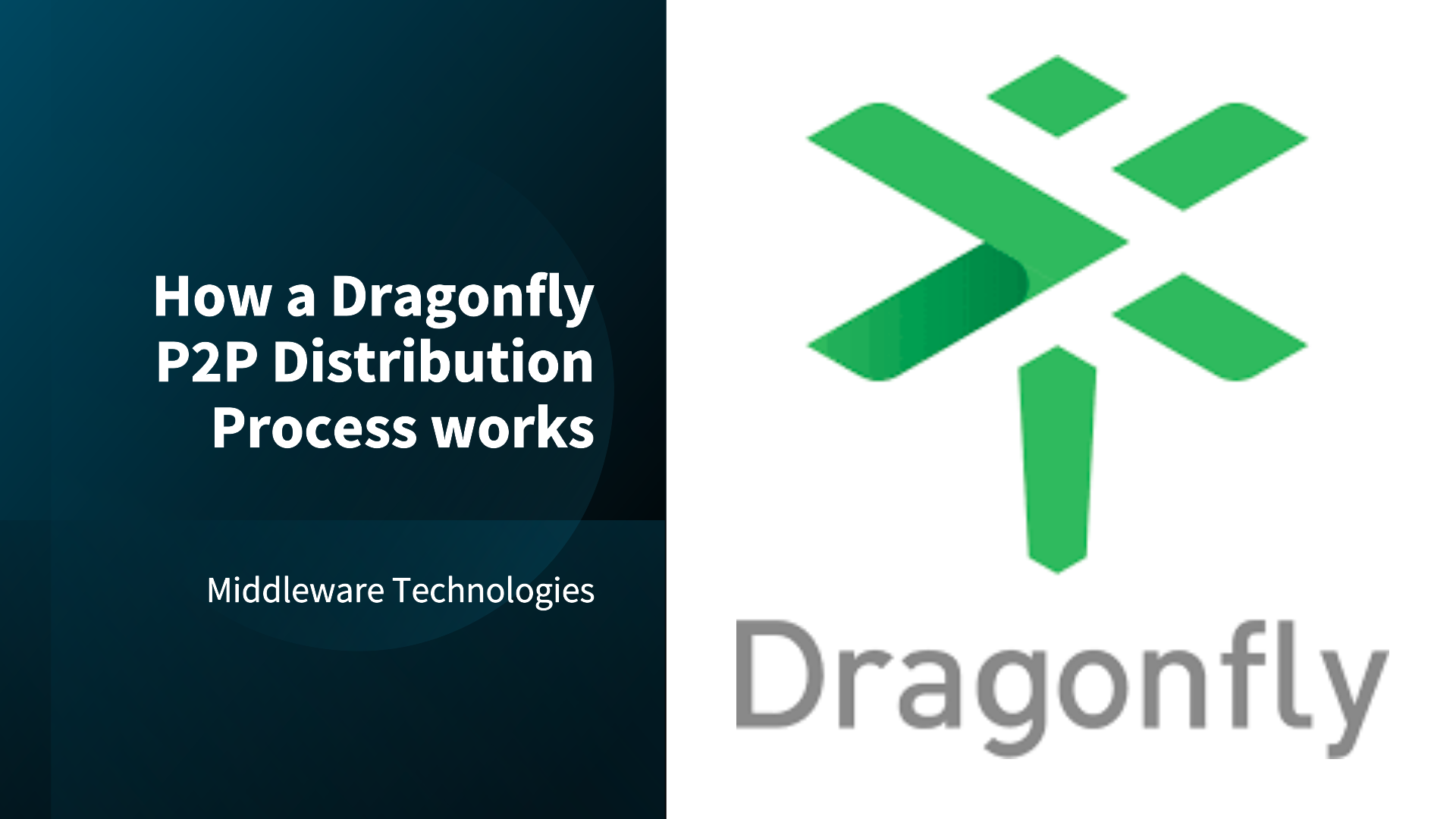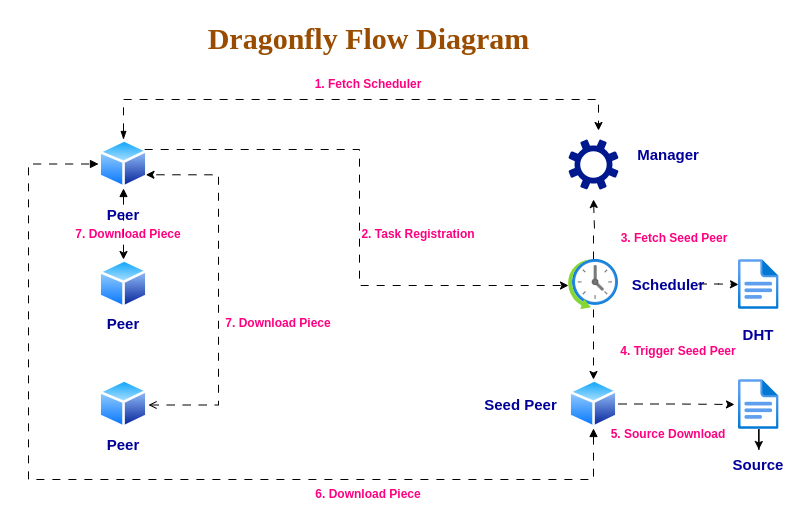How a Dragonfly P2P Distribution Process works

Dragonfly is an open-source, peer-to-peer (P2P) based file distribution system. It’s designed to improve the efficiency and speed of large-scale file distribution, especially in scenarios like.
- Application distribution
- Cache distribution
- Log distribution
- Container image distribution
Here’s the high level flow diagram for a request flow through Dragonfly P2P Network.

If you are interested in watching the video. Here is the YouTube video on the same step by step procedure outlined below.
Here’s a step-by-step explanation of how Dragonfly P2P technology process works.
Process
1. Request Initiation
- When a client (peer) needs to download a file (e.g., a container image layer), The download request is proxied to Dragonfly via the Peer HTTP Proxy to Manager to fetch appropriate Scheduler information. The request is then routed to the discovered Scheduler.
2. Task Registration
- The Scheduler receives the request and registers it as a “task.” This task contains metadata about the file, such as its size, hash, and source location.
3. Peer Discovery
- The Scheduler checks if other peers in the network already have parts of the requested file. It uses a distributed hash table (DHT) to efficiently locate these peers.
4. Peer-to-Peer Download
- If other peers have parts of the file, the Scheduler directs the requesting peer to download those parts directly from them. This is the core of Dragonfly’s P2P functionality.
- The file is divided into smaller chunks (pieces), and peers download these pieces from multiple sources simultaneously. This significantly increases download speed compared to traditional client-server downloads.
5. Seed Peer
- If no peers have the file or a specific piece, the Scheduler designates a “Seed Peer.”
- The Seed Peer is responsible for downloading the file from the original source (e.g., a container registry or an HTTP server).
- Once the Seed Peer has downloaded a piece, it becomes a source for other peers to download that piece.
6. Data Exchange and Verification
- Peers exchange data chunks with each other using a BitTorrent-like protocol.
- Each piece is verified using its hash to ensure data integrity.
7. Download Completion
- Once the peer has downloaded all the pieces, it assembles them to reconstruct the complete file.
- The peer can then become a source for other peers, further distributing the file within the network.
Key Components in Dragonfly
- Manager: Provides overall configuration and communication between different components.
- Scheduler: Manages download tasks, schedules peers, and optimizes download efficiency.
- Seed Peer: Downloads files from the original source.
- Peer: Downloads and uploads file pieces to other peers.
Benefits of Dragonfly
- Increased Download Speed: P2P distribution allows for parallel downloads from multiple sources.
- Reduced Bandwidth Consumption: By sharing data between peers, Dragonfly reduces the load on the original source and network infrastructure.
- Improved Availability: Even if the original source is unavailable, peers can still download the file from each other.
- Fault Tolerance: If some peers fail, downloads can continue from other available peers.
Dragonfly is a powerful tool for efficient and reliable large-scale file distribution, particularly in cloud-native environments and container image management.
Hope you enjoyed reading this article. Thank you..
Leave a Reply
You must be logged in to post a comment.